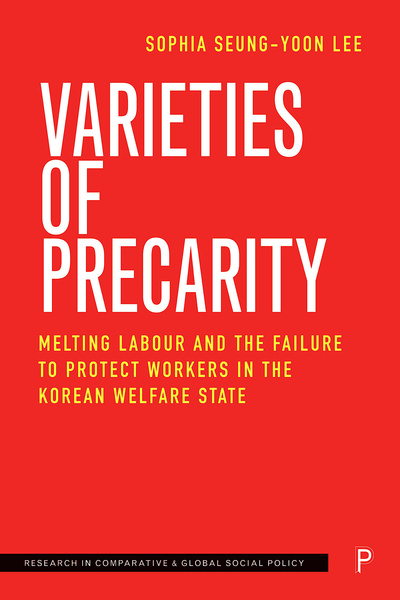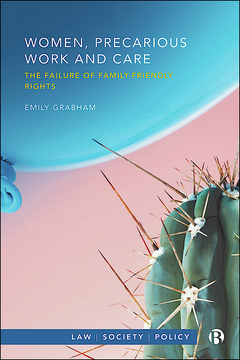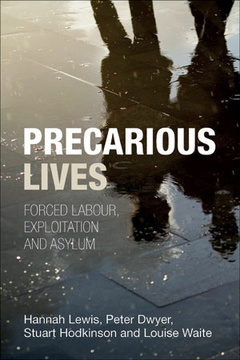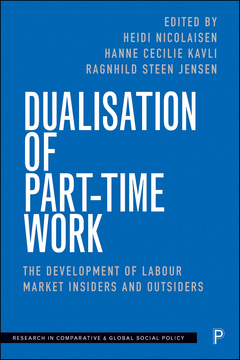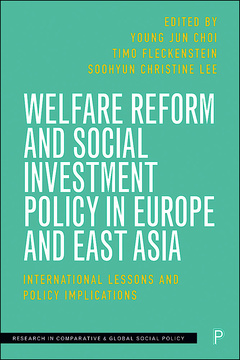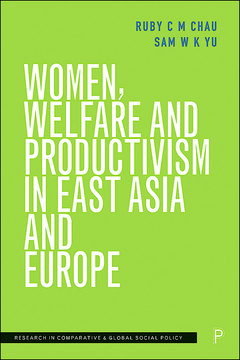Varieties of Precarity
Melting Labour and the Failure to Protect Workers in the Korean Welfare State
By Sophia Seung-yoon Lee
Published
Oct 27, 2023Page count
210 pagesBrowse the series
Research in Comparative and Global Social PolicyISBN
978-1447369257Dimensions
234 x 156 mmImprint
Policy PressPublished
Oct 27, 2023Page count
210 pagesBrowse the series
Research in Comparative and Global Social PolicyISBN
978-1447369264Dimensions
234 x 156 mmImprint
Policy PressPublished
Oct 27, 2023Page count
210 pagesBrowse the series
Research in Comparative and Global Social PolicyISBN
978-1447369264Dimensions
234 x 156 mmImprint
Policy PressOn the blog:
Melting labour and precarity in South Korea
Despite recent achievements in the South Korean economy and development within welfare institutions, new forms of precarious work continue to prevail.
This book introduces the concept of ‘melting labour’, which refers to the blurring of boundaries between traditional forms of work and workplace and the dissolution of standard employment relationships. Presenting a theoretical framework at the intersection of ‘melting labour’ and institutional protection of workers, it addresses how and why the Korean welfare state has failed to protect precarious workers.
Based on rich, in-depth interviews with over 80 precarious workers in Korea, from subcontracted manufacturing workers to platform workers, it provides a real depiction of how workers lose control over their lives and experience precariousness in labour markets.
"This book testifies the global spread of the precariat. Millions of people, including many in South Korea, are losing the rights of citizenship, and evidence such as found in this valuable book highlights the urgent need for a new progressive politics." Guy Standing, SOAS University of London and author of The Precariat: The New Dangerous Class
Sophia Seung-yoon Lee is Professor of Social Policy in the Department of Social Welfare at Chung-Ang University.
1. Introduction: Melting labour and institutional inconsistency
2. Social protection policies and the South Korean labour market in comparative perspective
3. When insiders are kicked out: layoffs of regular workers in manufacturing
4. Same boat, different destiny: subcontracted workers in the Korean shipbuilding industry
5. Young and old outsourced female workers in call centres and cleaning services
6. Are freelancers really free? The Korean freelance labour market and the precarity of young freelancers
7. The digital precariat: various Korean platform workers and the new work logic
8. Conclusion: Towards universal institutional protection for precarious workers in the era of melting labour








